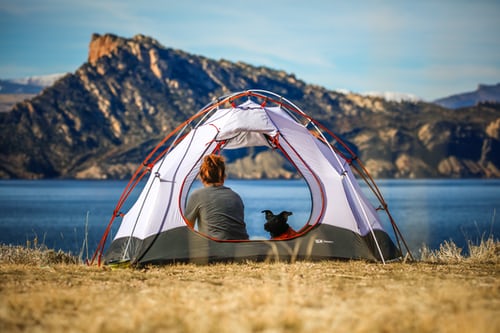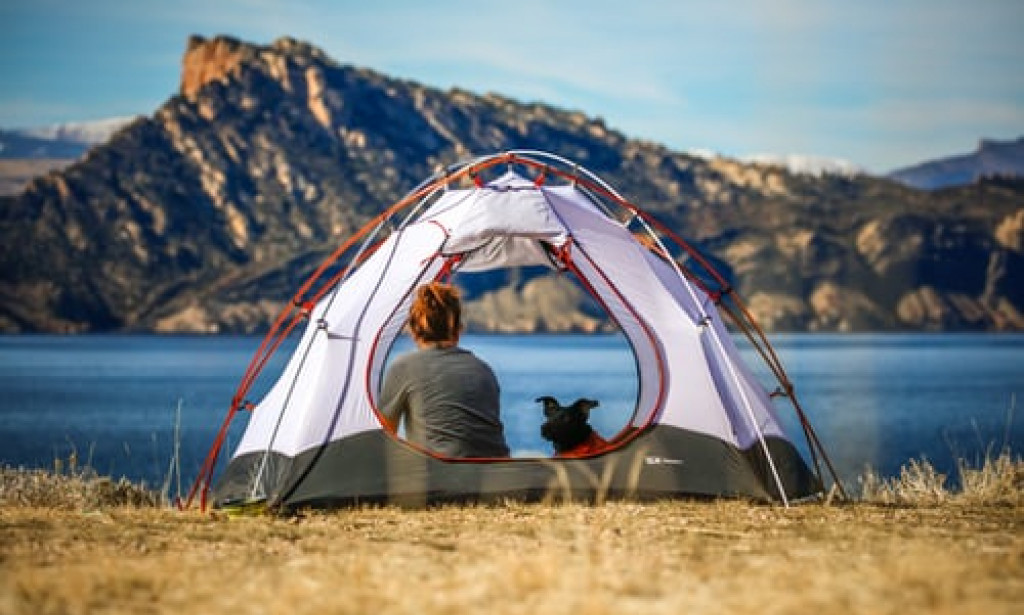Camping with your dog can be one of the most exciting experiences as this can also make for some good summer memories. Summer is a time when you and your furry companion can enjoy the fresh air in the wilderness while sleeping under the stars. In this article, we discuss some helpful tips for camping with your dog. Before hitting the trail with your dog, there are a few things that you should take into consideration. Unlike humans, dogs are quite and easy to please but the key to a successful vacation with your dog is preparation. Here are some important tips for camping with dogs.

1. Dog Training
Does your dog listen and respond when you give a command? If the answer is No, then your dog needs some form of training before embarking on your journey. Your dog does not need a PhD to listen to important voice commands and obey them. Your dog should be able to respond to some important commands such as stop, freeze or don't move. Other self-explanatory commands that your dog should understand include come, lay down, okay, leave it etc.
Whichever commands you decide to use, it is important for your dog to know when to stop, lay down, come back or drop whatever is in his or her mouth. Another essential command that your dog should learn is hurry up which is basically useful at rest stops where the dog has to defecate or urinate. Time is of utmost importance during camping. However, if you decide to keep your dog on a leash throughout the trip, some of these commands may not be necessary but keeping your dog on a leash could take away a lot of fun for you and your pet.
2. Consider Your Dogs Breed and Temperament
As much as you want your dog to obey all your commands, some dog breeds are hard to train. For instance, the smaller terriers usually do not handle wilderness trips very well. The Labrador Retriever, the Siberian Husky or other sporting dogs are smart and compliant breeds with a relatively cool temperament which is great for camping. Aggressive dogs have no place in the wilderness, whether it is towards other dogs, wildlife or humans.
Some dog breeds are also known to bark a lot. A barking dog can be extremely annoying especially to non dog-owners staying around the campsite. Such dogs should be left at home or trained not to bark which is quite possible. Some dogs can be too friendly even to the point of visiting the neighbors at night which can be a disaster. These type of dogs should be on a leash at least every night before bed to avoid unnecessary profanities from unfriendly neighbors.
3. Physical Fitness and Health
Some dogs such as the Basset Hound are a poor choice for hiking especially over rough terrains. Smaller dogs too should not be taken out for camping as they will just suffer as they have no way of telling you that they are out of shape. Dogs too like humans need regular physical exercises to keep them strong and healthy. Do not use your camping trip as a weight loss program for your dog as this is normally the time to increase the intake of calories for both of you, not decrease. Before embarking on your trip, increase your dogs calcium intake but do it gradually as a radical diet change may cause a lot of stomach distress.
A dog that is good shape should at least support itself by carrying their own dog pack with enough dog food to last a week. Your dog is not a wild animal, he or she also needs something to keep them warm in spring and fall such as a small fleece blanket although some dog breeds do not need anything to keep them warm. If you are taking a canoeing trip with your dog, you will need a canine personal flotation device (PFD) which is a must-have for non-swimmers but is also good for dogs that can swim since they too can get tired and drown. Remember to carry purified water as most dogs may drink stuff containing pathogens which will subject them to Amoebic Dysentery and other diseases.
4. Dog Poop?
Dog feces are not pleasant at all and can be mortally offensive. Depending on where you are, you can dig a small hole into the soil where you can put your dog’s poop or better yet carry a poop bag to keep the trail clean. If you decide to take your dog as your camping companion, then you should be ready to deal with the ramifications.
5. First Aid Kit
Your dog can also be injured just as you can. A dog may not be able judge what to do or not to do in a given situation. While some dogs are extremely cautious about their every move, some are fearless and this may cost them sometimes. Some terrains may be fun for you but dangerous for the dog. You dog’s foot pads suffer the most since they are not thorn proof meaning that even a little thorn can cause them so much pain. It is is important to have some effective pain management remedies since dogs cannot tolerate human pain relievers. Talk to you veterinarian who will recommend some good pain relievers for your dog such as Tramadol and Rimadyl. Tramadol is quite powerful and is good for chronic pain but can make your dog drowsy. Rimadyl will also help your dog with aches and pains.
Other Essential Tips For Camping With Dogs
There are other dog owner essentials that you need to carry with you before hitting the trail which include:
- Leash, Tether and Stake
- An LED Clip-on light for your dog
- Collapsible water and food bowls
- Dog Sleeping Bag
- Your dog’s documents i.e license and ID tags as well as vaccination papers
A camping vacation with a well-behaved dog can be one of the most unforgettable experiences. A dog can be the perfect companion who can watch, learn, love and even snuggle you at night. Nothing should discourage you from taking your dog on a wilderness excursion as there is nothing better than that if you follow these tips for camping with dogs.



You must be logged in to post a comment.